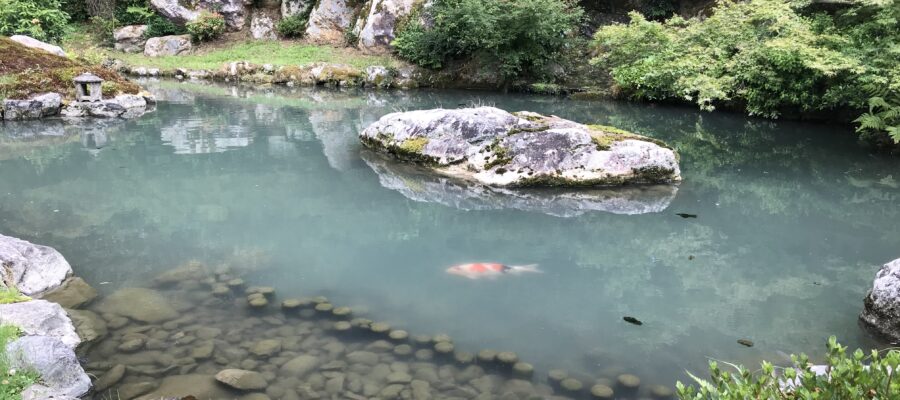ゆったりした雰囲気の庭園
NHKカルチャーセンターの講座で烏賀陽百合さんに案内いただいた青蓮院は、皇族や五摂家の子弟のみが住職となる門跡寺院の一つです。門跡寺院であるだけに、ゆったりした雰囲気が気に入って、その後何度か海外研修生に日本の庭園見学としてご案内しました。
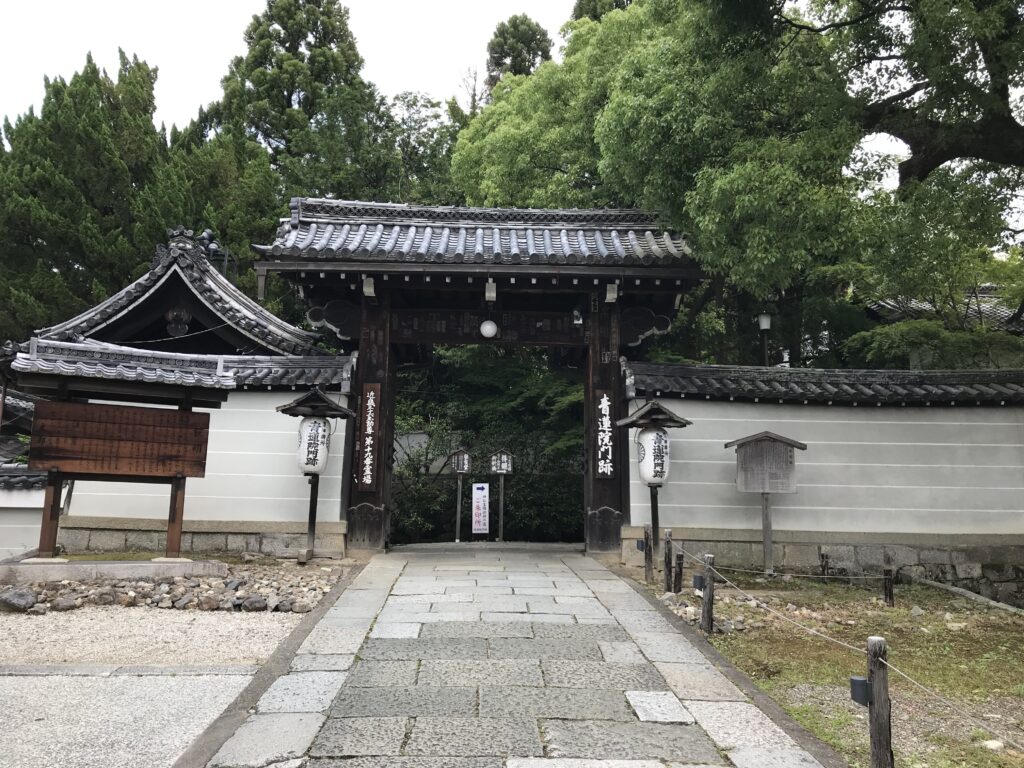
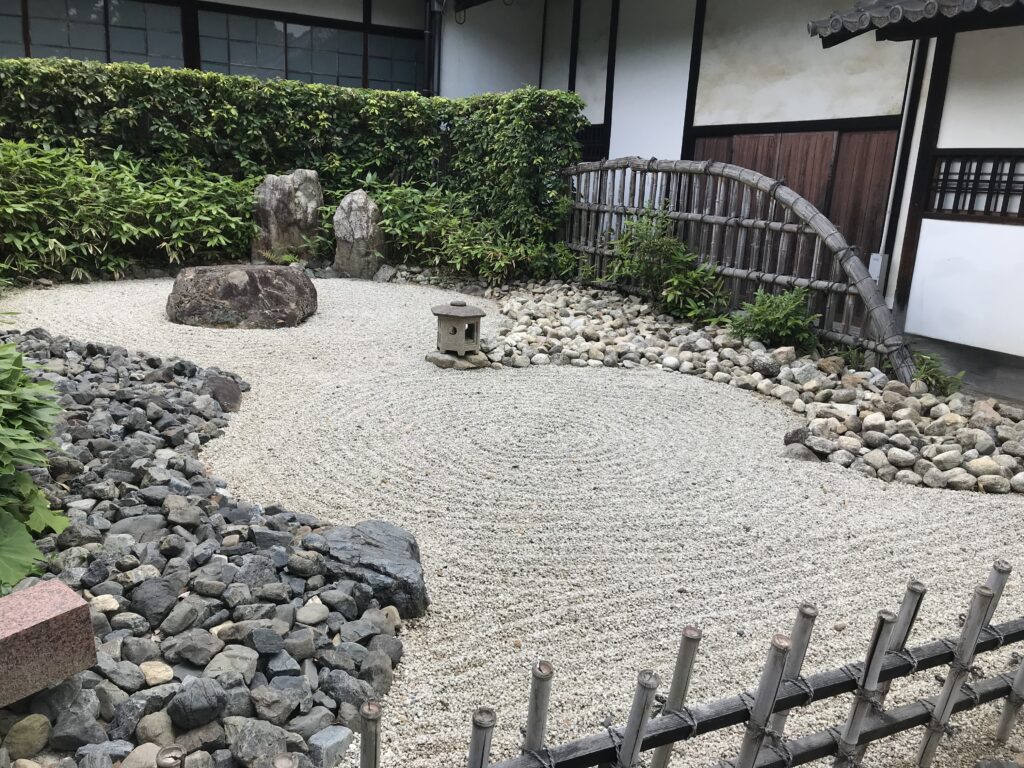
最初に華頂殿から、相阿弥の作庭と伝えられる泉水庭を眺めます。池の周りには横長の石が並べられていて、その穏やかな光景が落ちついたゆったりした雰囲気を生み出しています。殿舎内を見学していると、豊臣秀吉が寄進したという一文字型の手水鉢が渡り廊下の横に据えられていました。
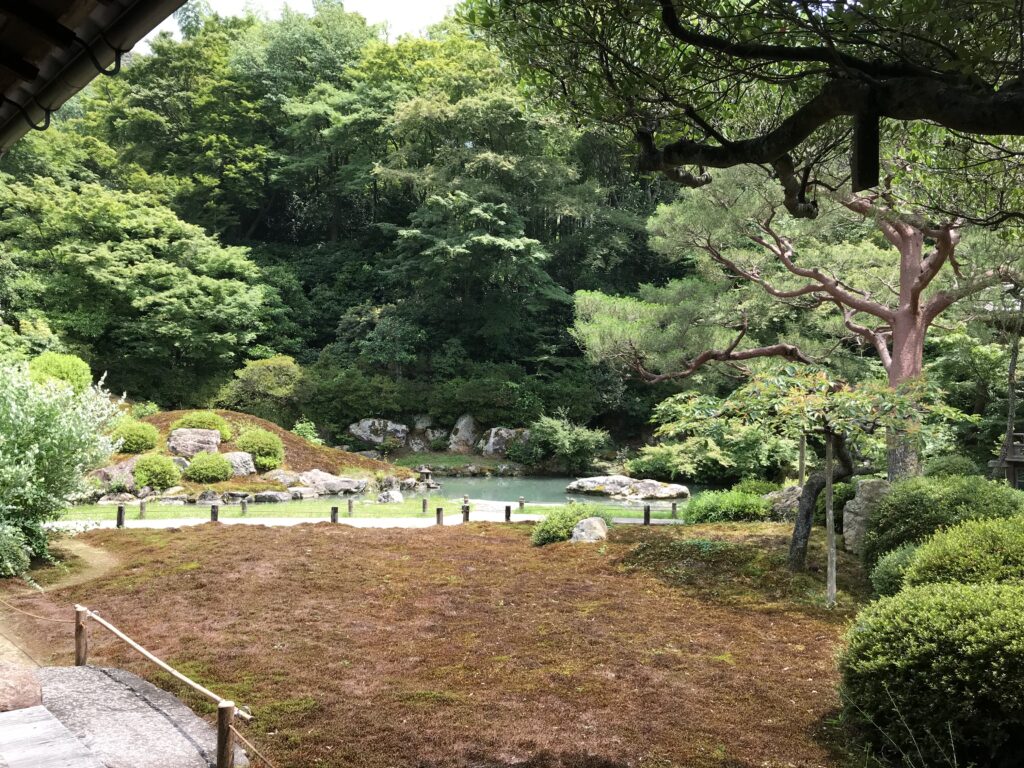
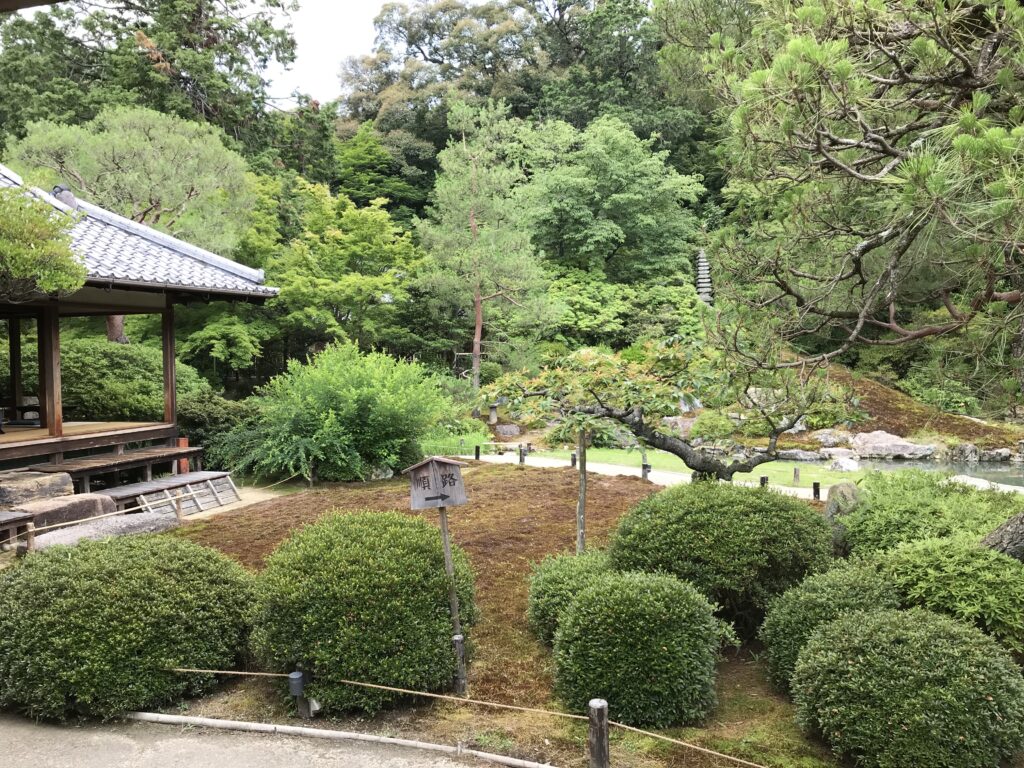
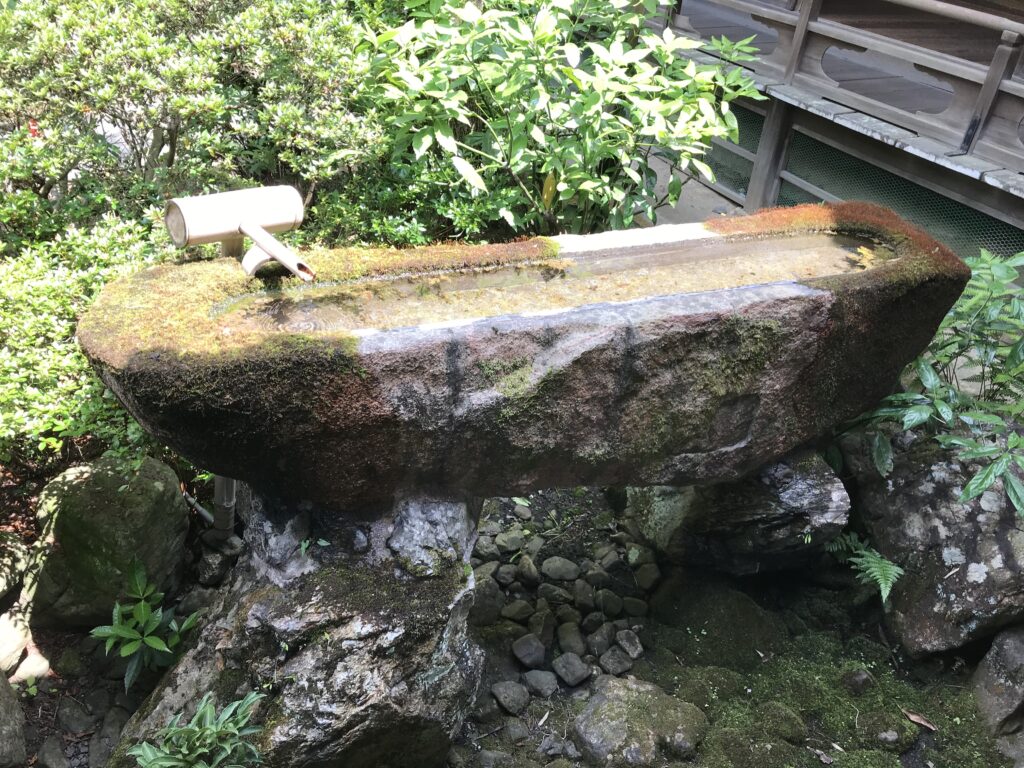
龍に関わるものが多い
平安京は四神相応の都、東は青龍にあたります。そのため東山は龍に関わるものが多く、青蓮院にも、水の神である龍の文字を入れて、龍心池と名付けられた池、跨龍橋と名付けられた橋があります。
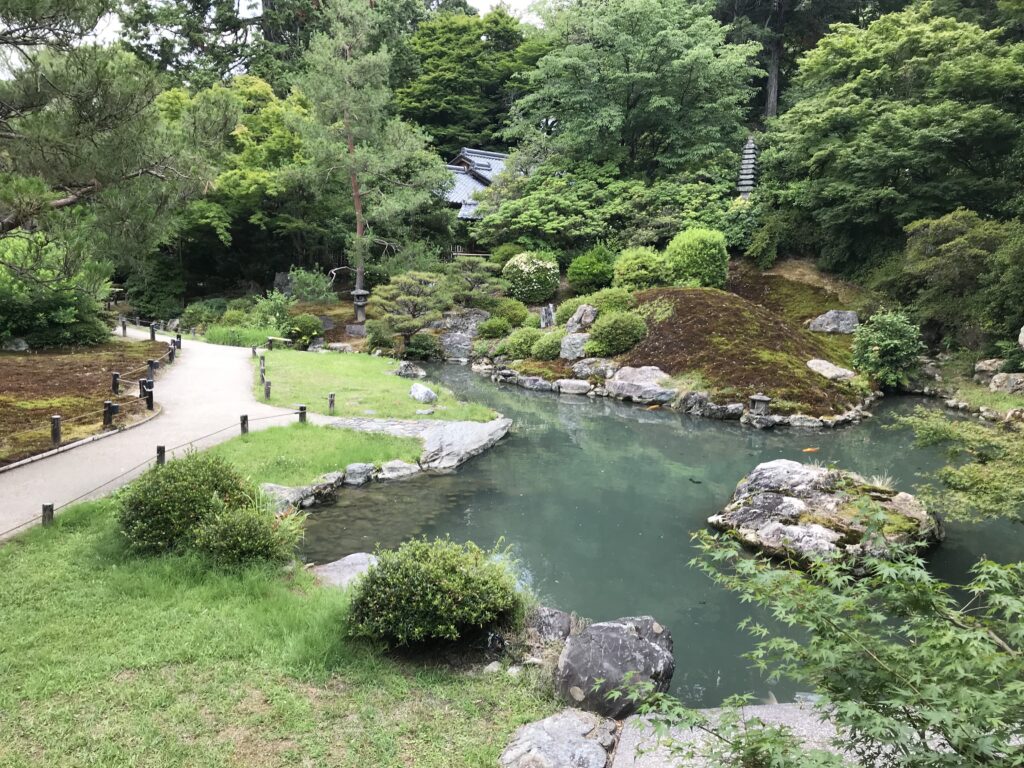
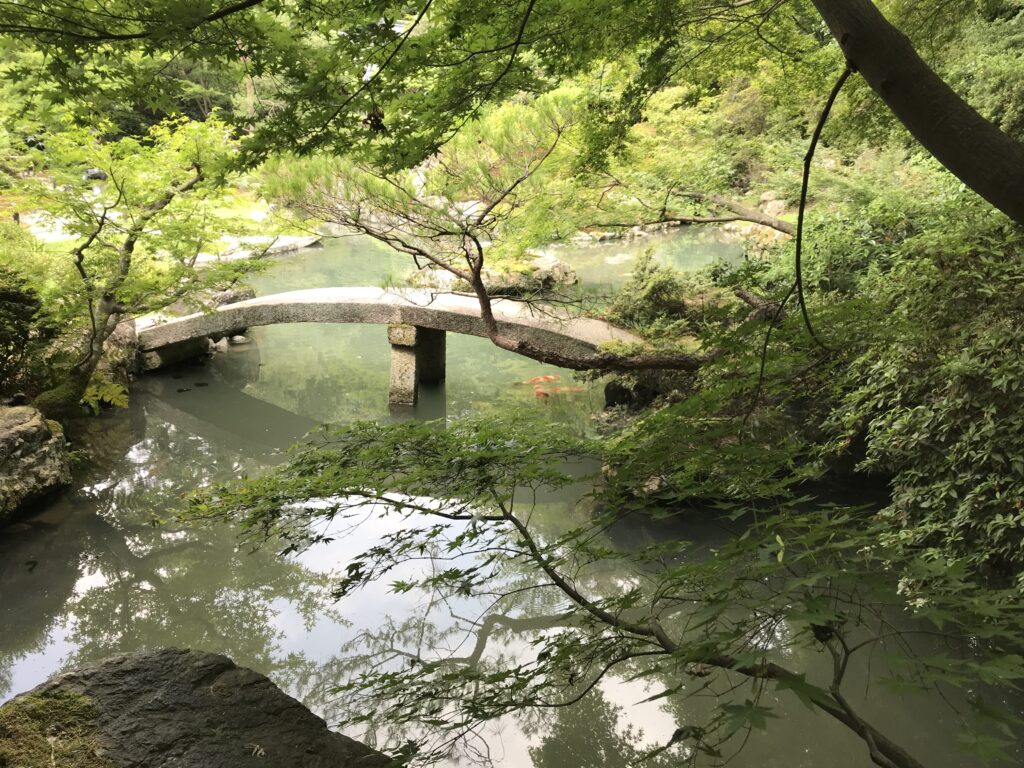
この龍心地には2000貫(約7,500kg)あると言われる大石が、水面に浮かび上がっているように据えられています。「あたかも沐浴する龍の背中の見ゆるが如き」と、昭和の名作庭家である中根金作は表現しています。水も青っぽく見えるので、本当に龍が飛び出してきそうな様子です。
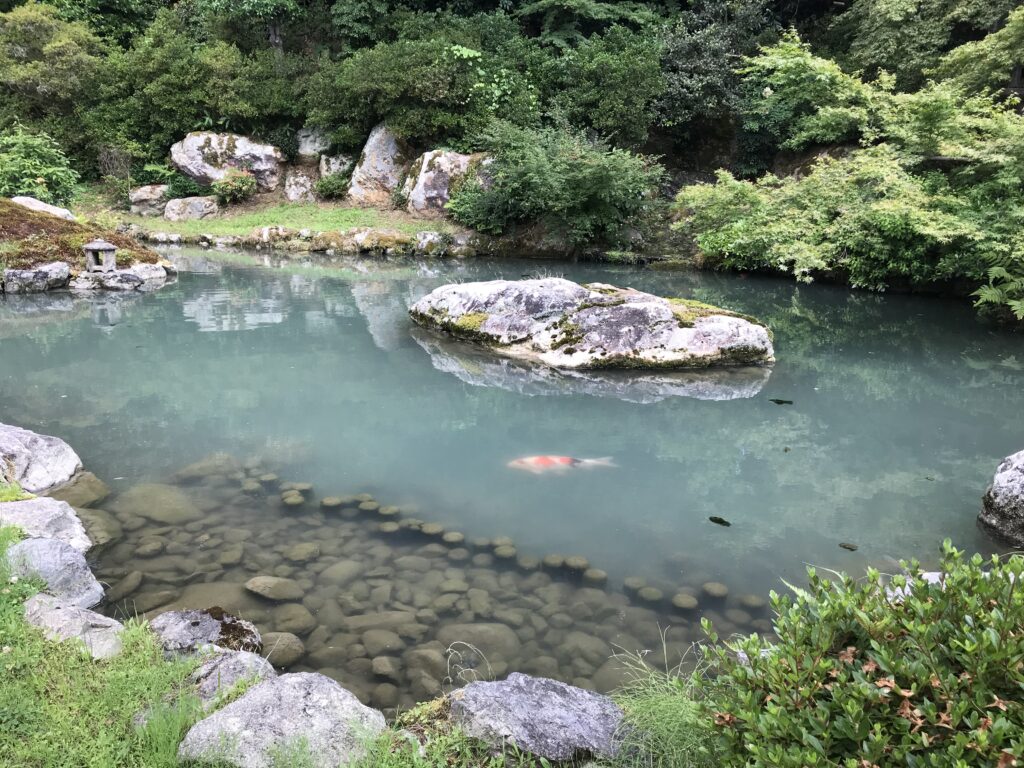
左近の桜と右近の橘
門跡寺院ですので宸殿があり、ご縁のあった天皇および歴代門主の御尊牌が祀られています。前の庭には、左近の桜と右近の橘が植えられており、宮中のような趣です。この宸殿において、親鸞が得度を受けたと言われており、親鸞のお手植えと伝えられる楠木が堂々と葉を茂らせています。日本庭園と宮中の雰囲気が味わえる場所ですので、京都見学コースに加えてみてください。(完)
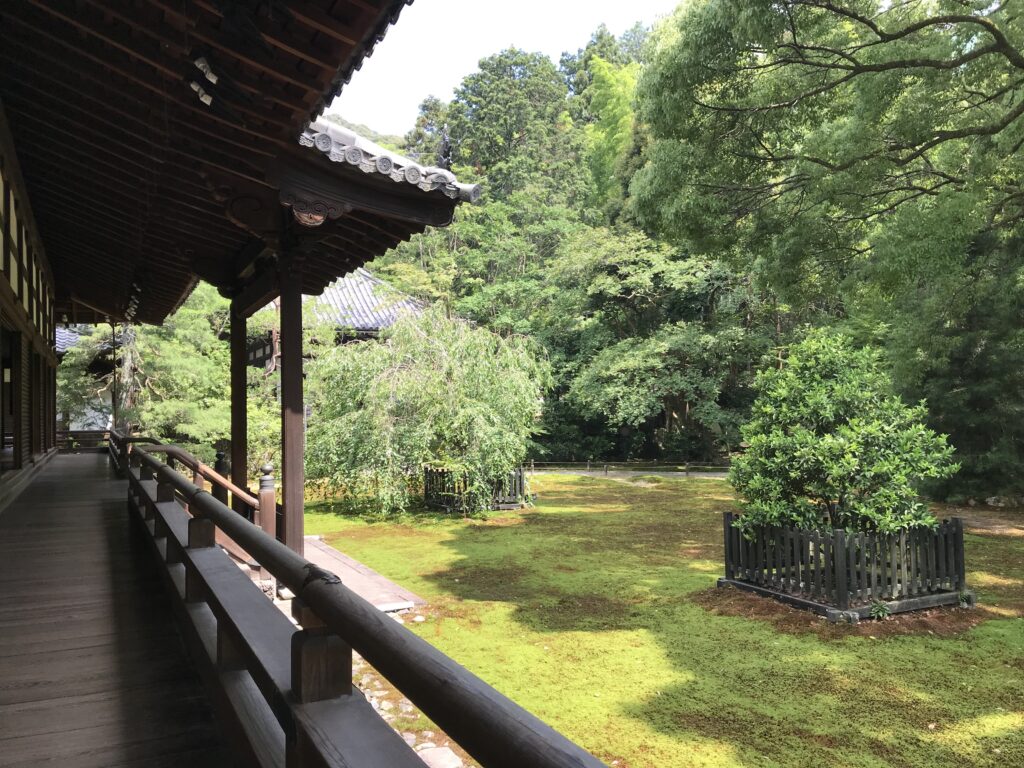
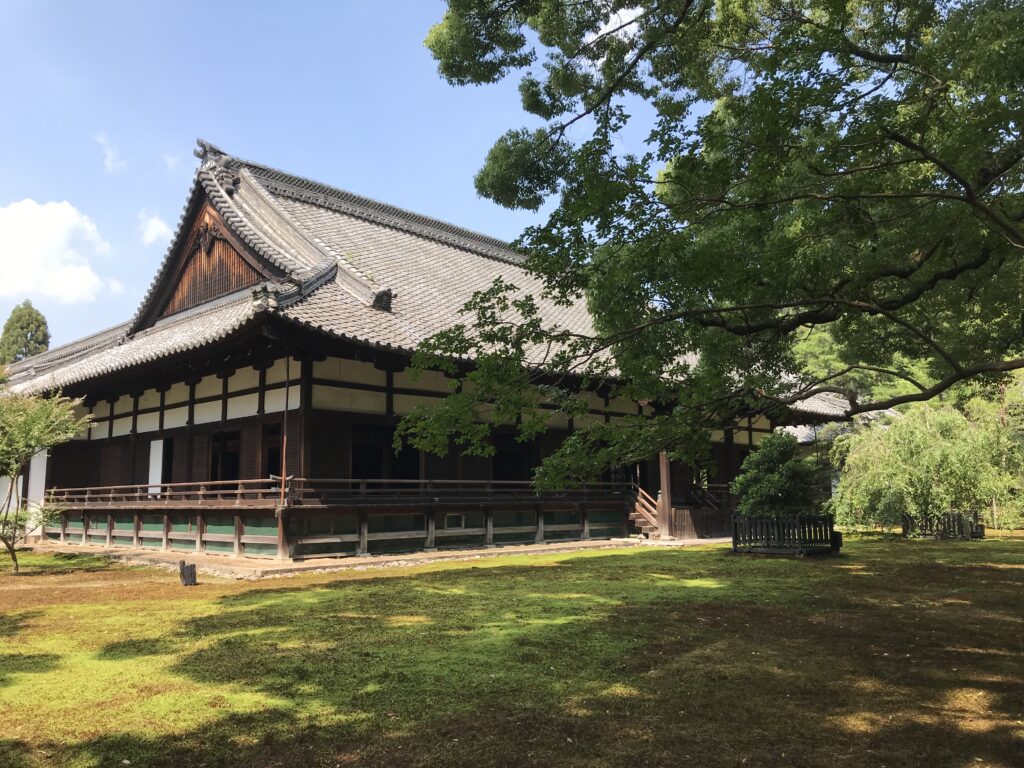
青蓮院の御朱印
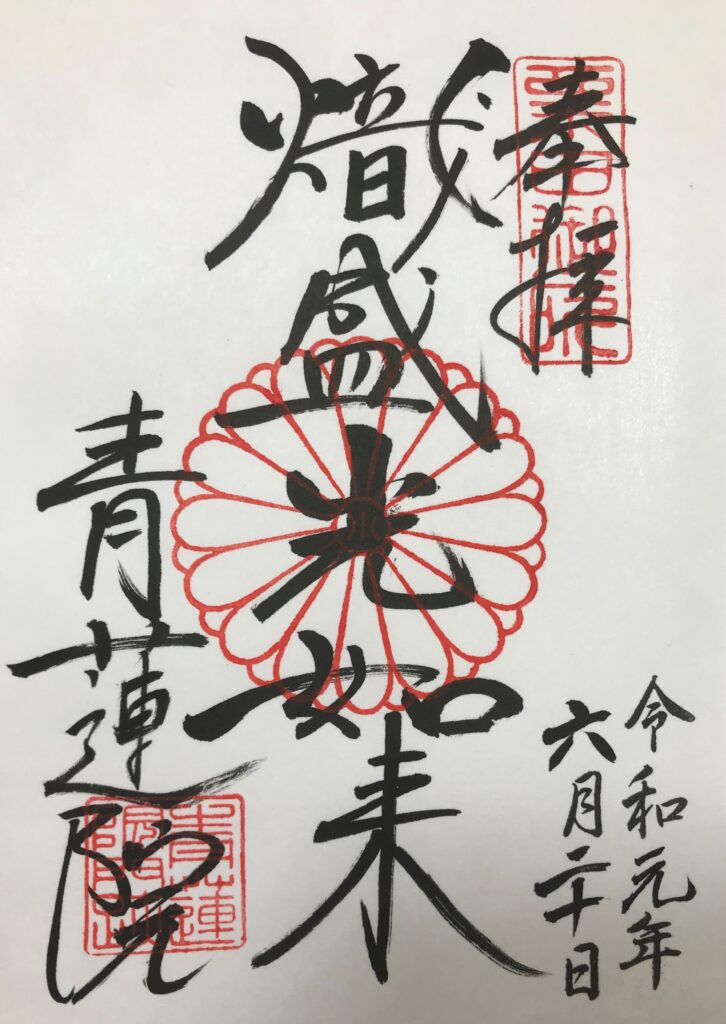
青蓮院が紹介されている書籍
烏賀陽百合さんの「しかけにときめく『京都名庭園』」に青蓮院の庭園が解説されてます。
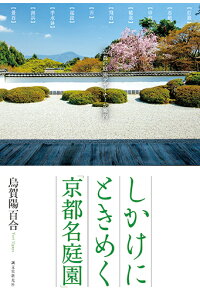
しかけにときめく「京都名庭園」 京都の庭園デザイナーが案内 [ 烏賀陽 百合 ]
価格:1,760円
(2021/5/3 10:53時点)
感想(0件)
Shoreline Temple (English)
A garden with a relaxed atmosphere
Shorenin Temple, which Ms. Yuri Ugaya guided me to in a course at NHK Culture Center, is one of the prestigious temples where only the children of the Imperial Family and the five regent families were the abbots. I liked the relaxed atmosphere of this temple, and I have taken overseas trainees there several times since then as a tour of Japanese gardens.
First, from the Kacyoden Hall, I could see the fountain garden, which is said to have been created by Soami. The pond is surrounded by horizontal stones, and the peaceful scene creates a calm and relaxing atmosphere. As we toured around the main building, we saw a water basin next to the corridor that was donated by Toyotomi Hideyoshi, one of Japanese Samurai’s top leaders.
Many things related to dragons
Heian-kyo (ancient name of Kyoto capital city) is the capital of the four gods, and the east corresponds to Seiryu (Blue Dragon). Shorenin temple also has a pond named Ryushin-ike (Dragon’s Heart Pond) and a bridge named Seiryu-bashi (Dragon Bridge), both named after the character for dragon, the god of water.
A large stone weighing 2,000 kan (about 7,500 kg) is placed in the dragon’s heart pond center as if it were floating on the water. Kinsaku Nakane, a famous gardener of the Showa period, described it as “like the back of a bathing dragon.” The water also looks bluish, so it looks as if a dragon is really jumping out of the water.
Sakon (left side) Sakura (cherry tree) and Ukon (right side) Tachibana (citrus tree)
The temple is a monastery and has a hall of honour where the tablets of emperors and successive heads of the temple are enshrined. In the garden in front of the hall, there are cherry blossoms on the left and tachibana trees on the right, giving the temple a palace-like atmosphere. It is said that Shinran (the leader of Shingen sect of Buddhism) received his ordination in this hall, and the camphor tree, planted by Shinran’s hand, grows luxuriantly. This is a place where you can enjoy the atmosphere of a Japanese garden and a palace, so please add it to your Kyoto tour course. (End)
Shoreline Temple (français)
Un jardin à l’atmosphère détendue
Le temple Shorenin, que Mme Yuri Ugaya m’a fait découvrir lors d’un cours au centre culturel de la NHK, est l’un des temples prestigieux dont seuls les enfants de la famille impériale et des cinq familles régentes sont les abbés. J’ai aimé l’atmosphère détendue de ce temple et, depuis, j’y ai emmené plusieurs fois des stagiaires étrangers pour leur faire visiter des jardins japonais.
Tout d’abord, depuis le hall Kacyoden, j’ai pu voir le jardin de la fontaine, dont on dit qu’il a été créé par Soami. Le bassin est entouré de pierres horizontales, et la scène paisible crée une atmosphère calme et relaxante. En faisant le tour du bâtiment principal, nous avons vu un bassin d’eau près du couloir qui a été offert par Toyotomi Hideyoshi, l’un des principaux chefs samouraïs japonais.
Beaucoup de choses liées aux dragons
Heian-kyo (ancien nom de la capitale de Kyoto) est la capitale des quatre dieux, et l’est correspond à Seiryu (Dragon bleu). Le temple Shorenin possède également un étang nommé Ryushin-ike (étang du cœur du dragon) et un pont nommé Seiryu-bashi (pont du dragon), tous deux nommés d’après le caractère du dragon, le dieu de l’eau.
Une grande pierre pesant 2 000 kan (environ 7 500 kg) est placée au centre du bassin du cœur du dragon, comme si elle flottait sur l’eau. Kinsaku Nakane, un célèbre jardinier de la période Showa, l’a décrite comme “le dos d’un dragon qui se baigne”. L’eau est également bleutée, ce qui donne l’impression qu’un dragon saute réellement hors de l’eau.
Sakon (côté gauche) Sakura (cerisier) et Ukon (côté droit) Tachibana (agrume)
Le temple est un monastère et possède un hall d’honneur où sont enchâssées les tablettes des empereurs et des chefs successifs du temple. Dans le jardin situé devant le hall, il y a des cerisiers en fleurs à gauche et des tachibaniers à droite, ce qui donne au temple une atmosphère de palais. On dit que Shinran (le chef de la secte bouddhiste Shingen) a reçu son ordination dans ce hall, et le camphrier, planté par la main de Shinran, pousse luxueusement. C’est un endroit où vous pouvez apprécier l’atmosphère d’un jardin japonais et d’un palais, alors n’hésitez pas à l’ajouter à votre itinéraire de Kyoto. (Fin)
